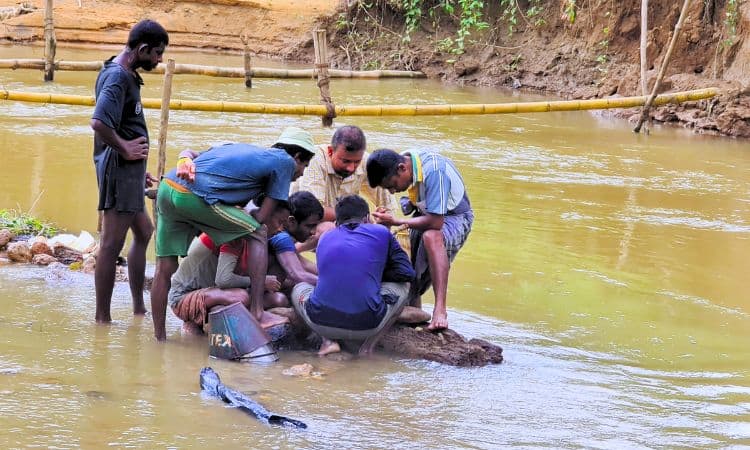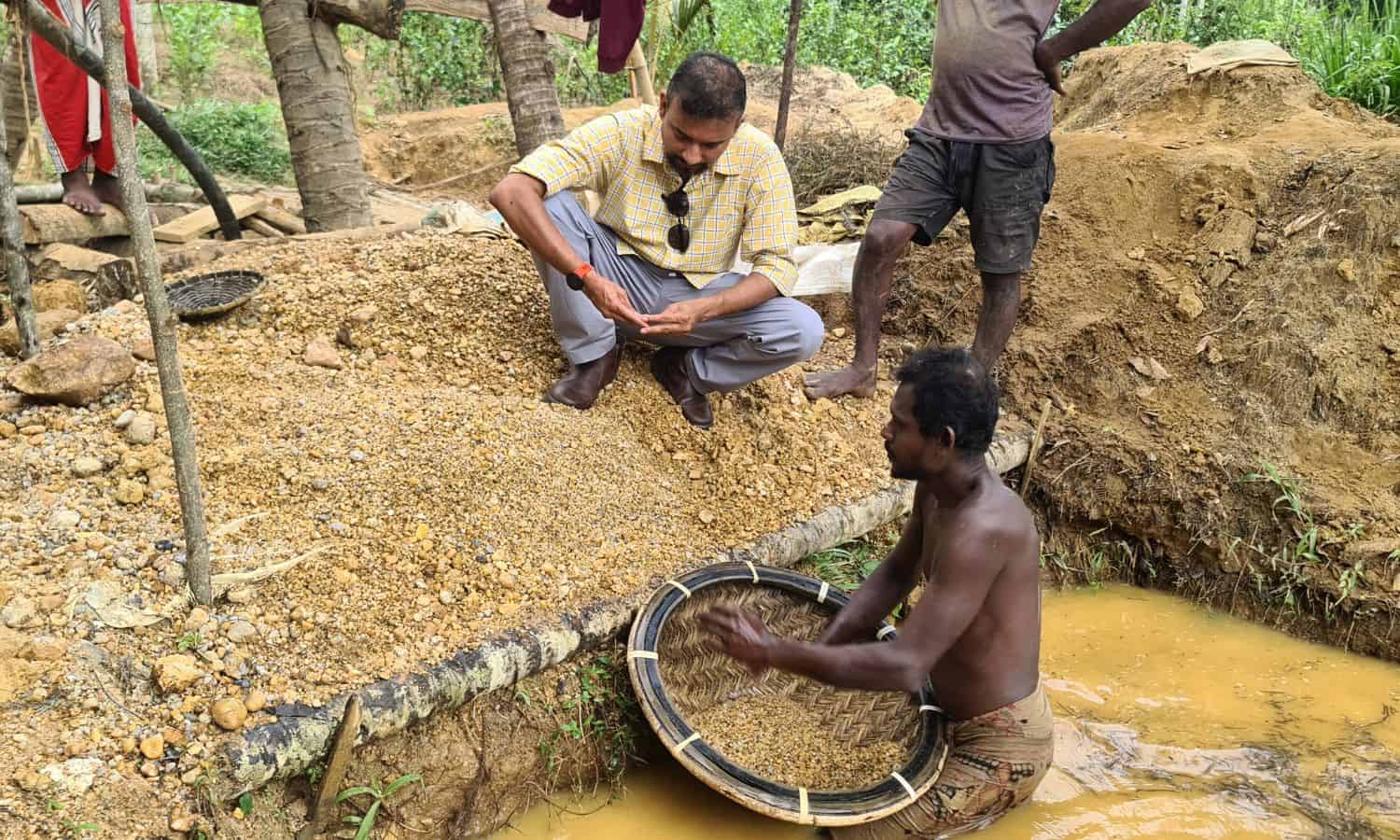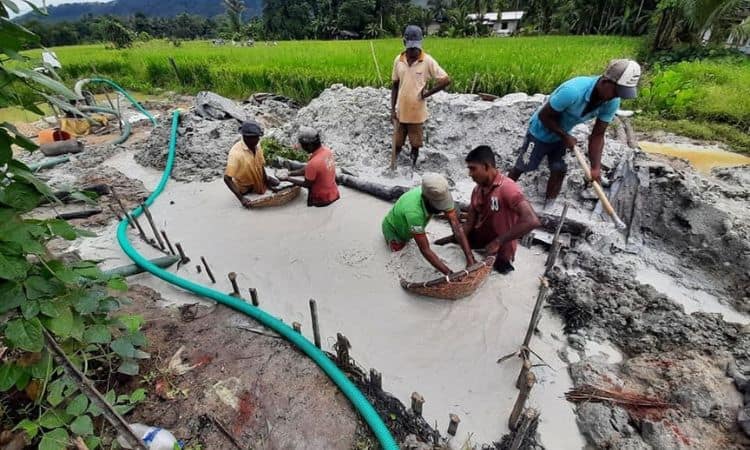Gem Mining in Sri Lanka & Thailand: History, Methods, and Markets
Gem Mining in Sri Lanka & Thailand: History, Methods, and Markets
Gemstones have captivated humans for millennia, symbolizing beauty, power, and prestige. When it comes to the world’s finest sapphires and rubies, two countries stand out—Sri Lanka and Thailand. Both nations have a rich legacy as major suppliers of exquisite colored gemstones, with bustling markets and time-honored mining traditions that continue to fascinate jewelers and gemstone enthusiasts alike.
In this comprehensive guide, we’ll explore the fascinating world of gem mining in Sri Lanka and Thailand, examining their history, renowned mining regions, mining techniques, unique gemstones, and the role these countries play in the global gemstone market.
A Brief History of Gem Mining in Sri Lanka and Thailand
Sri Lanka: The Island of Gems
Sri Lanka, often referred to as the "Island of Gems," has been a premier source of precious stones for over 2,000 years. Ancient Persian, Roman, and Chinese traders once flocked to its markets, drawn by the island’s legendary sapphires and rubies. The country is especially famed for its natural, untreated sapphires, with stones that are celebrated for their brilliance and vivid color saturation.
Ratnapura, meaning "City of Rubies," is the heart of Sri Lanka’s gem industry—the oldest and most important mining area. The name itself is a testament to the city’s historical and ongoing connection with the world’s finest corundum gems. Over the centuries, Sri Lankan sapphires, rubies, and the rare Padparadscha sapphire have adorned royal crowns and fine jewelry collections worldwide.
Thailand: Land of Blue Sapphires
Thailand has also played a pivotal role in the global gemstone market, particularly as a source of stunning blue sapphires. Historically, Thailand’s eastern provinces have been rich in gem deposits, attracting miners and merchants from across Asia for generations. Today, the city of Chanthaburi is recognized as a major international hub for gem cutting, polishing, and trading, making Thailand synonymous with world-class blue sapphires.
Key Gem Mining Regions
Ratnapura, Sri Lanka
- Ratnapura: The name means "City of Rubies," but the region is also famed for sapphires, garnets, spinels, and a wide variety of other gems.
- Ancient Riverbeds: Most of Sri Lanka’s gem deposits are found in alluvial gravels, often in current or ancient river systems surrounding Ratnapura.
- The Ratnapura Gem Market: One of the world’s most vibrant and historic gemstone markets, where miners, traders, and buyers converge daily.
Chanthaburi, Thailand
- Chanthaburi: Located in eastern Thailand, this city is internationally renowned for its gem cutting, polishing, and trading industries.
- Alluvial and Primary Deposits: While some gems are found in river gravels, others are mined from volcanic rocks and ancient soils.
- Seasonal Challenges: The rainy season often makes access to mining sites difficult, with muddy roads and flooded pits.
Unique Gemstones: What Makes Sri Lanka and Thailand Special?
Sri Lanka: Padparadscha and Beyond
- Sapphires: Sri Lanka is globally celebrated for sapphires of all colors, especially the famed Ceylon Blue Sapphires—renowned for their brightness and clarity.
- Padparadscha Sapphire: A rare, pinkish-orange variety of corundum unique to Sri Lanka, prized for its delicate and mesmerizing hue.
- Rubies: While rubies are rarer than sapphires in Sri Lanka, the country’s stones are highly valued for their quality.
- Other Gems: Sri Lanka also produces garnet, spinel, topaz, tourmaline, and more.
Thailand: Blue Sapphires and Masterful Cutting
- Blue Sapphires: Thai sapphires are esteemed for their deep, vivid blue color—some of the finest in the world.
- Ruby: Thailand has historically produced rubies, especially from the Chanthaburi and Trat regions.
- Gem Cutting and Treatment: Thailand is at the forefront of advanced gem cutting, heat treatment, and polishing, adding value to both local and imported rough gemstones.
Traditional and Modern Mining Techniques
Sri Lanka: Alluvial Mining and the Share System
Gem mining in Sri Lanka is predominantly alluvial, meaning that stones are extracted from loose soils and gravels in riverbeds and old river channels. The process is labor-intensive and steeped in tradition, involving:
- Digging shallow pits or trenches to access gem-bearing gravel layers known locally as "illam."
- Washing gravel in baskets or sieves, often in nearby streams, to separate heavier gemstones from lighter sediments.
- Share system: Profits from a successful mining venture are shared among landowners, financiers, and workers, ensuring fair compensation and community involvement.
- Strict environmental regulations: Modern Sri Lankan law requires restoration of mining sites, helping to preserve the local ecosystem.

sapphire mining in sri lanka in a river
Thailand: From Primitive Pits to Mechanized Mining
Thai gem mining practices range from simple, traditional methods to advanced mechanized operations:
- Primitive pit mining: Individual miners or small groups dig narrow pits by hand, using basic tools to extract gem-bearing gravels.
- Mechanized mining: Larger companies employ pumps, excavators, and conveyor belts, especially in deeper or more challenging deposits.
- Seasonal challenges: The rainy season in Thailand can make access to gem sites difficult, with muddy roads and water-filled pits slowing operations.
- Gem sorting: After extraction, gems are often washed and sorted in the backyards of local miners. Some even use their mouths to hold gems while picking through gravel, ensuring small stones aren’t lost.
The Journey from Mine to Market
Sri Lanka: Community Markets and Global Trade
Once mined and sorted, Sri Lankan gemstones make their way to local markets—most notably the bustling Ratnapura Gem Market. Here, miners, brokers, and buyers from across the globe gather to trade rough and polished stones. The process is highly interactive, with buyers carefully inspecting stones for quality, color, and potential.
- Five major gem markets operate across Sri Lanka, but Ratnapura remains the epicenter for sapphires and other high-value gems.
- Global reach: Sri Lankan gems are exported worldwide, prized for their natural beauty and ethical sourcing.

sapphire mining in sri lanka
Thailand: Chanthaburi, Cutting, and Export
In Thailand, the city of Chanthaburi serves as the nation’s gem trading capital. Here, rough stones are traded, cut, polished, and sometimes heat-treated to enhance color and clarity. Thailand’s expertise in gem cutting and treatment is renowned worldwide, with many stones from Africa and other regions sent here for processing.
- Gem cutting and polishing: Chanthaburi’s artisans are masters at transforming rough stones into dazzling gems, maximizing their value.
- Global distribution: Thai gemstones, especially blue sapphires, are exported to jewelry houses and gem dealers worldwide.
Ethics and Sustainability in Gem Mining
Both Sri Lanka and Thailand have made strides toward greater transparency and environmental stewardship:
- Sri Lanka: Modern regulations require post-mining land restoration, and the share system helps ensure fair compensation for all stakeholders.
- Thailand: Increased focus on responsible sourcing, environmental protection, and improved labor conditions in mining communities.
Tips for Buying Gems from Sri Lanka and Thailand
- Always request documentation or certification of a stone’s origin and treatment history.
- Work with reputable dealers or jewelers who are transparent about sourcing.
- Familiarize yourself with the unique characteristics of Sri Lankan and Thai gemstones, such as the bright blue of Ceylon sapphires or the deep hue of Thai blues.
- If possible, visit gem markets in Ratnapura or Chanthaburi for a firsthand experience!
Conclusion: A Legacy of Brilliance
The gem mining traditions of Sri Lanka and Thailand are woven into the fabric of global jewelry history. From the ancient riverbeds of Ratnapura to the vibrant markets of Chanthaburi, these countries continue to produce some of the world’s most sought-after sapphires and rubies. Whether you are a collector, jeweler, or simply a lover of beautiful stones, exploring the heritage, methods, and markets of these gem-rich regions is a journey worth taking.
Interested in learning more about ethical sourcing or planning a gem market visit? Reach out to local gem associations in Sri Lanka and Thailand for expert guidance and a deeper dive into the world of colored gemstones.



Comments (0)
Write your review